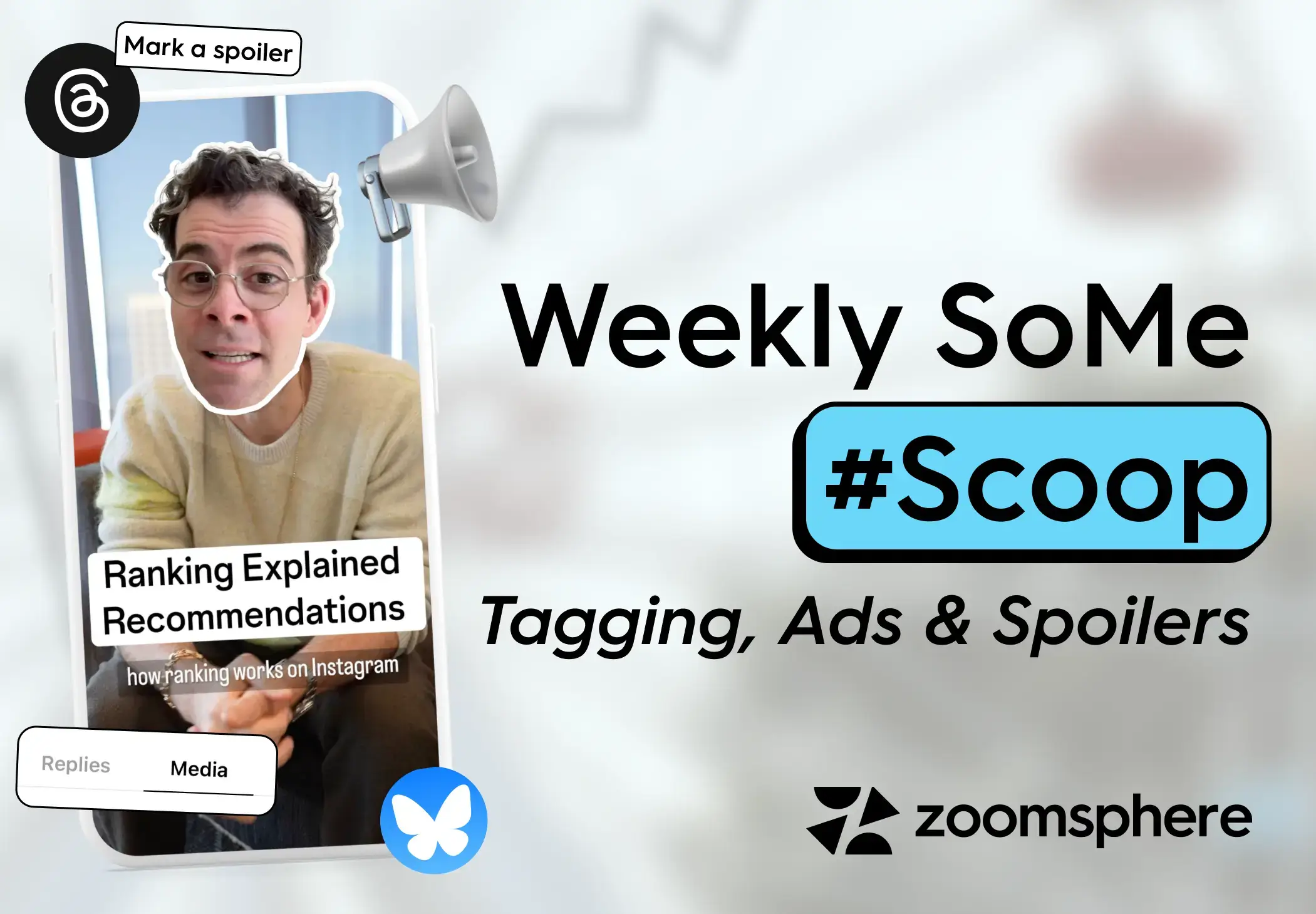What Makes a Workflow Worth Following
%20(1).webp)
Not the One With Color-Coded Columns That Nobody Obeys
Most guides on workflow management make one tragic assumption: that people follow workflows just because they exist.
As if clarity were contagious.
As if adding “In Progress” to a Notion column guarantees anything other than existential waiting.
The real test is not launch weeks. Not planning sprints. It’s Tuesday. Mid-month. Someone’s on leave. A Slack thread is quietly boiling over. That’s when workflows either hold or fold.
Creative workflow management isn’t about getting approvals. It’s about not needing to send three follow-ups, a voice note, and a “quick nudge” emoji to move one idea forward. It’s about making sure no one’s digging through four apps and five memories just to find version 6b_final_REALFINAL.
The point of a workflow isn’t to look organized. It’s to reduce decision latency, unblock humans, and make the boring bits fast enough to save the good ideas from drowning in admin.
So let’s not fix what’s broken.
Let’s break what’s pretending it isn’t.
{{form-component}}
Why Most Creative Workflows Don’t Survive the Week
Airtable. Trello. Notion. ClickUp. Look, the issue isn’t the platform. The issue is that your workflow only works when nobody actually uses it.
What you have is less of a creative workflow process and more of a Pinterest-themed suggestion box—where cards go to vibe, not move.
We’ve seen it a thousand times: The board is clean. Columns are color-coded. There’s a project intake form template nobody fills out properly. The approval stage is always “awaiting feedback,” but nobody knows whose. And then? Launch gets “pushed.” Again.
Not because the work wasn’t done. But because the doing was buried under a pile of process that looked good on a Monday stand-up slide deck.
It’s Workflow Theater, Not a Workflow
You know those projects where everything “looks on track,” but nothing ships? That’s not coincidence. That’s choreography. Everyone’s doing the performance. Nobody’s getting results.
Around 60% of a typical knowledge worker’s day is lost to meta-work. That’s over 664 hours a year talking about work instead of doing it. That’s 83 full workdays per person, per year. Gone. Spent scheduling, updating, re-re-updating, and ~aligning~.
And creative teams bleed the worst. Not because they’re disorganized. But because they work non-linearly—yet we keep handing them linear tracking systems built like tax software.
Design needs rework? Content hit a legal snag? Strategy pivoted mid-sprint? Linear systems can’t handle that kind of curveball. So they snap. Quietly.
Structure ≠ Movement
Here’s the dangerous bit: the illusion of progress. A column labeled “In Review” creates a false sense of traction. Like, “Oh, we’re getting there.” Are we?
If your creative workflow process always has four cards jammed in the same spot, the problem’s not the campaign. It’s the system pretending to manage it.
And yet—teams cling. Because it took three weeks to set up. Because someone exported it as a PDF. Because the intern color-coded it and now it looks pretty.
That’s sunk cost bias with a user interface.
If You’re Still Using It Out of Habit, It’s Sentimentality
The moment your team spends more time “checking the board” than pushing an idea live, you’ve crossed into ritual. What you’re running isn’t a workflow. It’s a shrine to good intentions.
And if anyone still needs proof: show us the last time that “Approval” column was empty for more than 48 hours.
We’ll wait.
“Just Tell Me When It’s Ready” Isn’t a Workflow — It’s Abdication
You’re not too busy to ruin things by ignoring process.
You are simply too polite. Too trusting. Too “someone else will probably remember.”
In marketing teams everywhere, you see the informal handoff syndrome: you ask “Can you handle this?” and get a nod. No one writes the handoff. No one assigns the second owner. And then—silence. Launch day comes. Someone raises a white flag. “I thought you were reviewing.”
That’s not a creative workflow process. It’s abdication.
The Hidden Cost of “I’ll Let Sam Take It”
The moment you hand off approval responsibility without structure, you’ve folded accountability. The design review process turns into “someone check this when they have 10 minutes,” and guess how often that actually happens? Rarely enough for deadlines to bleed. Without a clear content approval workflow (who approves, when, how many rounds), your team turns work into waiting. That wastes energy, focus, and good ideas.
The Project Intake Form Template That Actually Works
Before any work begins, you need to capture the ask. Too many campaigns launch because someone said “We’ll figure it out later.” According to industry guidance, a defined project intake form template is one of the most effective ways to stop that from happening. The form forces clarity: requester, deadline, scope, must‑haves. You skip it at your own risk.
Compliance without Killing Creativity
You might fear process kills creativity. But that’s not true. Weak process kills creativity. If every review takes 4 rounds and 19 comments, your team learns: “Next time I’ll just skip review altogether.” Instead, build a content approval workflow where each round has a deadline, each reviewer knows their gate, and feedback happens in-thread (not five tools later). Use tools that let you assign roles, set visibility, track subtasks—so the workflow supports the creative, not subverts it.
If your next campaign arrives with “I’ll let you know when it’s ready” you’re already behind. A workflow worth following says: This will be reviewed by X by Y time. You’ll get a yes/no decision, not a maybe. And suddenly, your Monday doesn’t feel like damage control.
Everyone Likes It, So Why Is Nothing Getting Published?
There’s a very specific kind of silence that only happens in creative workflow management: the silence where everyone “likes” the work, the work should be live by now, the content calendar looks peacefully empty—and somehow nobody is panicking.
Because if everyone is vaguely happy, but nothing is going live, your marketing workflow isn’t collaborative. It’s conflict‑avoidant.
As Abhishek perfectly puts it:
%20(2)%20(1).webp)
There it is.
The real villain is not the platform, or the audience, or the deadlines.
It’s polite hesitation.
When the approval step relies on someone remembering to review “sometime today,” nothing moves. Because no one wants to be the bad guy. No one wants to say,
“This needs to go live now.”
or
“This isn’t ready. Fix it.”
Soft agreements create hard delays.
Ghosted Approvals and the Cult of Approval Niceness
Approval limbo isn’t rejection—it’s avoidance.
It’s the quiet hope that someone else will take responsibility.
So everything gets stuck in a sort of “unopposed, unclaimed, un‑moved” state.
And the sad part is… you can run your marketing workflow for six months like this without anyone technically doing anything wrong.
Nobody missed a deadline. Nobody refused.
Nobody decided.
No = friction.
Yes = clarity.
Maybe = death.
The Binary Rule: Yes Publishes. No Fixes.
Creative teams don’t need more opinions.
They need binary gates:
- Yes → prepare to publish
- No → return with revisions
- Anything else → not allowed
This eliminates the “I’ll review when I get time” death spiral.
The Approval SLA Template That Stops Delays
A simple approval SLA template—not fancy, not philosophical—fixes 90% of stagnation:
%20(1).webp)
No “circling back.”
Just movement by rule.
“But We Don’t Want to Be Rigid” is How Work Dies
Teams say this because they fear structure kills creativity.
But it’s actually the lack of structure that kills finished creative.
Creative freedom needs walls.
Not fences with twelve gates and three padlocks—just one clear door everyone agrees to walk through on schedule.
If the workflow cannot make decisions without emotional negotiation, it’s not a workflow.
It’s group therapy in a kanban board.
Say this plainly in the organization:
If we say yes, it moves. If we say no, it fixes. If no one says anything, it moves anyway.
That’s the moment your workflow starts breathing again.
That’s when publishing becomes normal, not heroic.
Workflow Traps That Look Smart But Burn Teams Alive
Somewhere between “let’s make this smoother” and “why hasn’t this moved in 11 days”...
Someone built a workflow that looked great in the kickoff deck—and murdered productivity by Tuesday.
We’re talking about those deceitfully sexy traps: structured, templated, beautifully segmented setups that absolutely strangle real humans the moment anything needs to move at speed.
False Automation: The Workflow That Forgot the Humans
Your content approval workflow has five automations. One triggers an email to Legal. Another sends a Slack ping to two reviewers. Someone gets an Airtable update. Trello updates a due date.
And yet—nobody knows who’s actually responsible for hitting publish.
Automation without ownership is just digital noise.
If your brand compliance workflow turns every step into a ping but still requires a human to ask, “Hey, is this actually approved?”—then what you’ve built is not efficiency. It’s passive confusion, on loop.
You didn’t reduce effort. You just hid it under a pile of triggers.
Overcollaboration
Here’s a quick audit: If 12 people reviewed a 21‑word tweet, and it still went out with a typo, then that’s not good enough.
Too many cooks don’t spoil the broth. They bury it under 37 suggestions, three reopens, and a “just a thought…” at 4:57pm.
Your design review process is not a town hall. It’s a decision funnel. And if it lets every VP’s loose opinion hold equal weight to the person who actually owns the channel…
You’re apologizing in advance.
The Microtask Megastructure: Where Productivity Goes to Die
Seen this before?
A task titled “Launch Campaign”.
Click to expand.
And out pours 43 subtasks. Sub-subtasks. Nested checkboxes. A two-week Gantt chart.
No owner. No actual due date.
Just layers of “don’t forget to also do this” from eight different people who each think their ask is the most reasonable one.
A content approval workflow that takes longer to navigate than the actual production process is a broken loop pretending to be process hygiene.
.webp)
What Actually Fixes This
You don’t need another Notion widget. Or another tag. Or a new color-coding system.
You need a rule:
One task. One outcome. One owner.
If the task has three possible endings and five possible owners, it’s not a task. It’s a shared delusion.
Brand compliance shouldn’t mean six business days of waiting for Legal to maybe “have a look.” It should be:
- Here’s the version.
- Here’s what legal needs to check.
- Here’s the deadline to respond.
- Here’s what happens if no one replies.
(Answer: it goes live. With your name on it.)
And when you’re designing workflow layers? Match reality—not fantasy.
That means:
- Stop designing for people at their best.
- Start designing for people at 3:28pm, slightly tired, skimming Slack, with 18 tabs open and 9 minutes till their next call.
Because that’s when your workflow will actually get tested.
Smart workflows don’t try to impress ops people.
They just quietly, reliably... work.
Which, for some teams, is the most rebellious thing a system can do.
The Only 3 Tests That Prove a Workflow Works
You don’t need another retrospective. You need a stopwatch, a straight face, and three brutally simple checks.
Most marketing workflows are like haunted vending machines:
Look shiny. Eat hours. Deliver nothing.
You think yours works because it has a Notion dashboard, three swimlanes, and a column labeled “Ready for Review”? Try again. If your creative workflow management system can’t pass these three tests with your eyes closed and your brain half-functioning on a Tuesday, it’s already bleeding you dry.
Let’s start the audit.
1. The Shadow Day Test
Hand your current workflow to the newest hire on your team.
No walkthroughs. No call. No cheat codes.
If they can’t ship something by Day 3 without tapping you 17 times like a broken lamp switch, that workflow is dead on arrival.
This isn’t a test of intelligence. It’s a test of infrastructure.
If the system only works when the senior manager babysits it, what you have is institutional memory, not a workflow.
{{cta-component}}
2. The Latency Drill
Pull the timestamp on when something was marked “Ready.”
Now check when it actually got “Approved.”
If that gap is over 24 hours, your process is not a process. It’s a polite holding pen for half-made decisions.
In marketing workflow systems that actually get used (and trusted), decision latency is sub-24h by design — because no one wants to send another Slack thread at 9:17am asking “Any update here?”
Every additional hour a task sits unapproved costs momentum, not just time. It quietly drains output quality. That's documented in actual workplace latency studies. Delays degrade quality more than quantity.
3. Unassisted Completion %
This one stings: what percentage of tasks in your system don’t require manager intervention before being marked complete?
If it’s not 85% or higher, then you’ve built an approval dependency trap.
A real workflow allows people to move. On their own. With clarity, authority, and a finish line that doesn’t need a manager’s calendar slot to exist.
Anything else? You’ve just created a collaborative performance of pretend autonomy.
Test your system right now. No need for a post-mortem, team offsite, or a fresh template. Just these three numbers — and a bit of intellectual honesty.
If you don’t like the results, the workflow’s not wrong.
You are.
And If You Do Want a Tool That Enforces This...
The real reason creative approval management eats entire weeks isn’t the people. It’s the fact that you’ve duct-taped seven tools together and expect the intern to know which tab is “live.”
(Also: people have real jobs. They won’t chase five links just to approve a caption.)
So, if you’re ready to fire your spreadsheet, you might want a workflow that doesn’t make basic things feel like back-alley brain surgery.
ZoomSphere. And Chill.
We’re not saying you need it. We’re saying it stops the kind of inefficiencies that give marketing leads ulcers.
Here’s what a functioning creative workflow process looks like without the standard 11-app migraine:
- One unified Scheduler — tie the post, caption, assets, channel, stats, and approval chain into one single point of truth. (With auto-generated captions if you're not in the mood to wordsmith at 2am.)
- Workflow Manager — actual roles. Actual cards. Actual deadlines that aren’t “tentative depending on if Carol ever replies.”
- In-tool chat + AI nudges — so approvals happen in seconds, not after someone “finds time to circle back.”
- Now supports LinkedIn personal stats. Yes, finally.
{{form-component}}
If you’d like to get your launches (and sanity) back, you can steal our templates. No login walls. No email ransom.
And if you really want to, steal the whole stack.
We built it so you could stop playing workflow charades and get back to work that matters.
Or at least work that ships before Friday.
Pretty Workflows Don’t Ship Work—Obeyed Ones Do
The real scandal in creative workflow management isn’t chaos—it’s politeness.
It’s watching a team of A-players ghost their own process because it’s “not that urgent,” “not totally clear,” or “not my job.” And you know what? They’re not wrong.
People don’t disobey workflows because they’re lazy.
They disobey them because the workflow was built for vibes, not movement.
We’ve seen it too many times: workflows designed like art installations. Fluid, beautiful, vaguely aspirational. But the moment tension hits (a missed review, a reshuffle, a quiet panic 17 hours before launch), the whole thing collapses like a wet napkin.
You want motion? You want accountability? Forget elegance.
Chase obedience. Chase frictionless routing, time-boxed decisions, and calendars that scream, “This will go live with or without you.”
Because when workflows are actually followed—when every campaign moves without five Slack nudges and a handwritten escalation—you don’t just get cleaner operations.
You get back the real stuff: headspace, momentum, and the permission to focus on work that’s too good to lose in someone’s overdue tab.
And no, Asana can’t do that on its own. Neither can Trello. Or Notion. Or whatever's trending next Tuesday.
You do that… with rules people respect and a setup they can’t ignore.












Heading 1
Heading 2
Heading 3
Heading 4
Heading 5
Heading 6
Lorem ipsum dolor sit amet, consectetur adipiscing elit, sed do eiusmod tempor incididunt ut labore et dolore magna aliqua. Ut enim ad minim veniam, quis nostrud exercitation ullamco laboris nisi ut aliquip ex ea commodo consequat. Duis aute irure dolor in reprehenderit in voluptate velit esse cillum dolore eu fugiat nulla pariatur.
Block quote
Ordered list

- Item 1
- Item 2
- Item 3
Unordered list
- Item A
- Item B
- Item C
Bold text
Emphasis
Superscript
Subscript



.webp)



%20(1).webp)
%20(1).webp)

